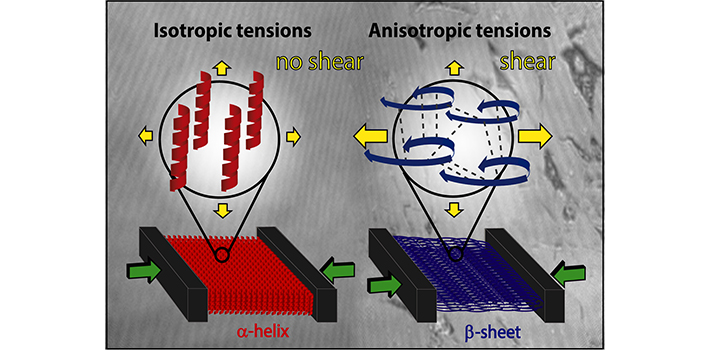Caruso B et al. 2016, Colloids Surf B Biointerfaces.
We determined the rheological properties of β-amyloid Langmuir films at the air/water interface, a peptide whose interfacial structure is extended β-sheet, and compared them with those of films composed of Melittin (Mel), which adopts an α-helical conformation at neutral pH. To determine the dilatational and shear moduli we evaluated the response of pure peptide monolayers to an oscillatory anisotropic compressive work. Additionally, a micro-rheological characterization was performed by tracking the diffusion of micrometer sized latex beads onto the interface. This technique allowed us the detection of different rheological behaviour between monolayers presenting a low shear response. Monolayers of the β-sheet structure-adopting peptides, such as β-amyloid peptides, exhibited a marked shear (elastic) modulus even at low surface pressures. In contrast, Mel monolayers exhibited negligible shear modulus and the micro-rheological shear response was markedly lower than that observed for either Aβ1-40 or Aβ1-42 amyloid peptides. When Mel monolayers were formed at the interface of an aqueous solution at pH 11, we observed an increase in both the lateral stability and film viscosity as detected by a slower diffusion of the latex beads, in keeping with an increase in β-sheet structure at this high pH (verified by ATR and FT-IR measurements). We suggest that the interactions responsible for the marked response upon shear observed for β-amyloid peptide monolayers are the hydrogen bonds of the β-sheet structure that can form an infinite planar network at the interface. Conversely, α-helical Mel peptide lack of these inter-molecular interactions and, therefore the shear contribution was negligible. We propose that the secondary structure is important for modulating the rheological behavior of short peptide monolayers regardless of the mass density or surface charge at the surface.
Authors: Caruso B, Ambroggio EE, N Wilke, Fidelio GD.



